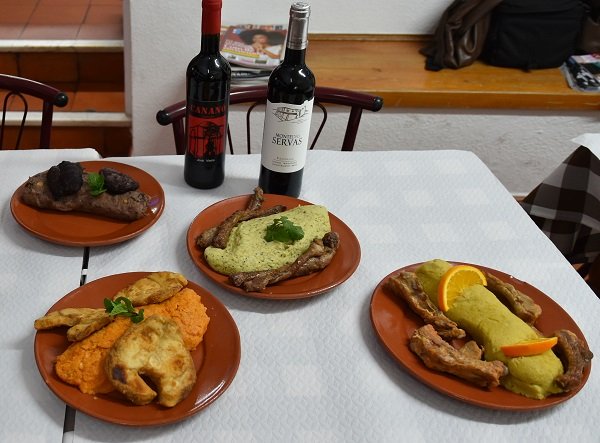Migas à Alentejana is one of the best-known dishes in Alentejo cuisine. It appears on most menus, and looks like a bread stuffing flavored with local herbs. Like the açordas and other dishes from this region, the basic ingredient is indeed wheat bread, a traditional product of the Alentejo.
Migas comes from the verb "migar” which means to break up into crumbs. Migas are a typical stuffing made of wheat bread, then cooked in a pork fat. Historically, migas are a bread soup where there are a hundred different recipes. Basically it is water, bread crumbs, olive oil and salt, with a variable contribution of garlic, bacon, pork, chouriço, pepper, paprika, eggs, pork, bay leaf, herbs. Some say that migas began as cubes of bread soaked in milk for breakfast. From there, it became a full meal — accompanied by local pork, another product with great traditions in the region. In addition to bread and pork, it can include garlic, paprika and salt.
The first mention of migas was in a cookbook by Domingos Rodrigues in 1680 as a cheese and pork soup. In Culinária Portuguesa (1936) the designation migas associated with açordas or cod and açorda migas or pork migas and the title à Alentejana, appears. There seems to be a consensus that, within the migas chapter, there is a recipe that seems in itself to be a category that is cod migas, which in the Alentejo acquired the name of "gatas”.
The tradition of migas with fish and particularly cod was due to the low price of salt cod, and that many people ate fish on Fridays. The dish is made by soaked stale bread and then finished with animal fat in a process of thickening. Then we have lots of variants including potato, and flavoring ingredients such as turnip greens, beans, asparagus, cabbage, eggs, and cod. The migas is often served with side dishes — often grilled pork to compliment the migas.
So, try the migas, the stuffing that takes the main stage in the Alentejo.



